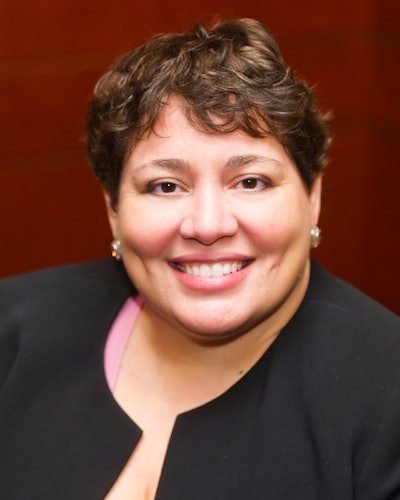Enrollment in higher education institutions has increased among Latinx students and the number of Hispanic-serving institutions (HSIs) continues to grow, new research says.
Excelencia in Education, an organization focused on Latinx students’ success, has conducted and released an annual analysis focused on HSIs and emerging HSIs over the last 15 years. HSIs are defined as institutions where Hispanic students comprise a minimum of 25% of all enrollment, according to the Hispanic Association of Colleges and Universities.
 Deborah Santiago
Deborah Santiago“We want to make sure that we are investing in the education of this young, fast-growing population and knowing where they enroll and their patterns of success should matter to all of us,” said Deborah Santiago, co-founder and chief executive officer of Excelencia. “It affects our institutions, our communities and our economy.”
In the last year, Latinx student enrollment has increased from 1.3 million to 1,442,110, according to the research.
Santiago predicted the increase stemmed from the Latinx population continuing to grow and mature in the U.S. Additionally, the population has become more college ready and values higher education, and institutions are now recognizing that they should be proactively reaching out to Latinx students.
She added that institutions should question whether they are an HSI because of demography and geography or intentionality and impact.
Over the last 10 years, the number of HSIs has grown from 280 to 539, a 93% growth rate. Of all of the HSIs, 54% are four-year institutions and 69% are public institutions, the research said.
Sarita Brown, co-founder and president of Excelencia, said that the “dramatic” growth is an important observation for the discussion surrounding Latinx students.
“I think it’s important particularly at this moment when we have to be thinking about the future and we have to be mindful that institutions, students and families are navigating pretty desperate situations,” she added. “And if we want to think about equity and addressing Latino students, the community of HSIs and the cities in which they reside have to be on our radar when we think about how to respond to the Latino community and how to support these students going forward.”
Less than 20% of colleges and universities enroll more than 65% of all Latinxs in higher education. In 2018-19, as many as 539 institutions enrolled 67% of Hispanic students, which is a 3% increase from the year before. There are 27 states with HSIs including those who don’t have a large Latinx population including Arkansas, Georgia, Idaho, Indiana, Louisiana, Maryland, Ohio and Wisconsin, according to the research.
 Sarita Brown
Sarita Brown“We want to make sure we invest in them, if they are enrolling almost two-thirds of all Hispanics in this country, we should invest in the capacity and the quality of these institutions,” said Santiago. “Make sure that we have an educated citizenry and workforce.”
Additionally, 35 states have at least one emerging HSI. California leads with the highest number of emerging HSIs, 46, followed by Texas, Florida, New York, Illinois, Massachusetts, Arizona, Connecticut, New Jersey and Colorado.
Santiago said in order to support HSIs, the focus should not just be on the data. Instead, institutions should be distinguished by whether they are really serving Latinx students as opposed to just enrolling them.
“I think you can support HSIs by really begging the question around intentionality,” said Santiago. “Are you really intentional about serving them? I think that really brings the attention and focus to not just the numbers but then to the institutional leadership and investment into this population.”
Excelencia plans to also examine completion and graduation rates among HSIs.
“Even in these times, there are some challenges in our country when facing this pandemic,” said Santiago. “It’s still important that we pay attention to what’s happening short term and also our long term plans and looking at where Hispanics are enrolled and what policies and practices matter [that] are helping them out and thinking about what we are doing next year.”
The coronavirus pandemic, Brown said, will not only affect HSIs but everyone in a “profound way.”
“We are going to be reinventing how to go forward and I think that the nature of the immediate, dramatic impact on even the confidence of campus communities opening in the fall is not to be taken for granted,” she said.
Brown added that in general, many colleges and universities serve as hubs in communities and people will congregate together again.
“Those of us who are safe need to be mindful of those who are not,” she said. “It means paying attention, paying attention to what is happening nationally for Latino students, paying attention to serving Latino students well and then making the choices individually in our lives. If we are safe, if we are strong, how can we help?”
Sarah Wood can be reached at [email protected].



















